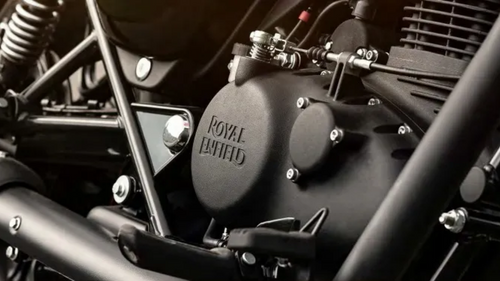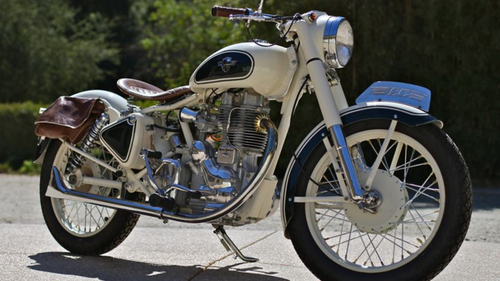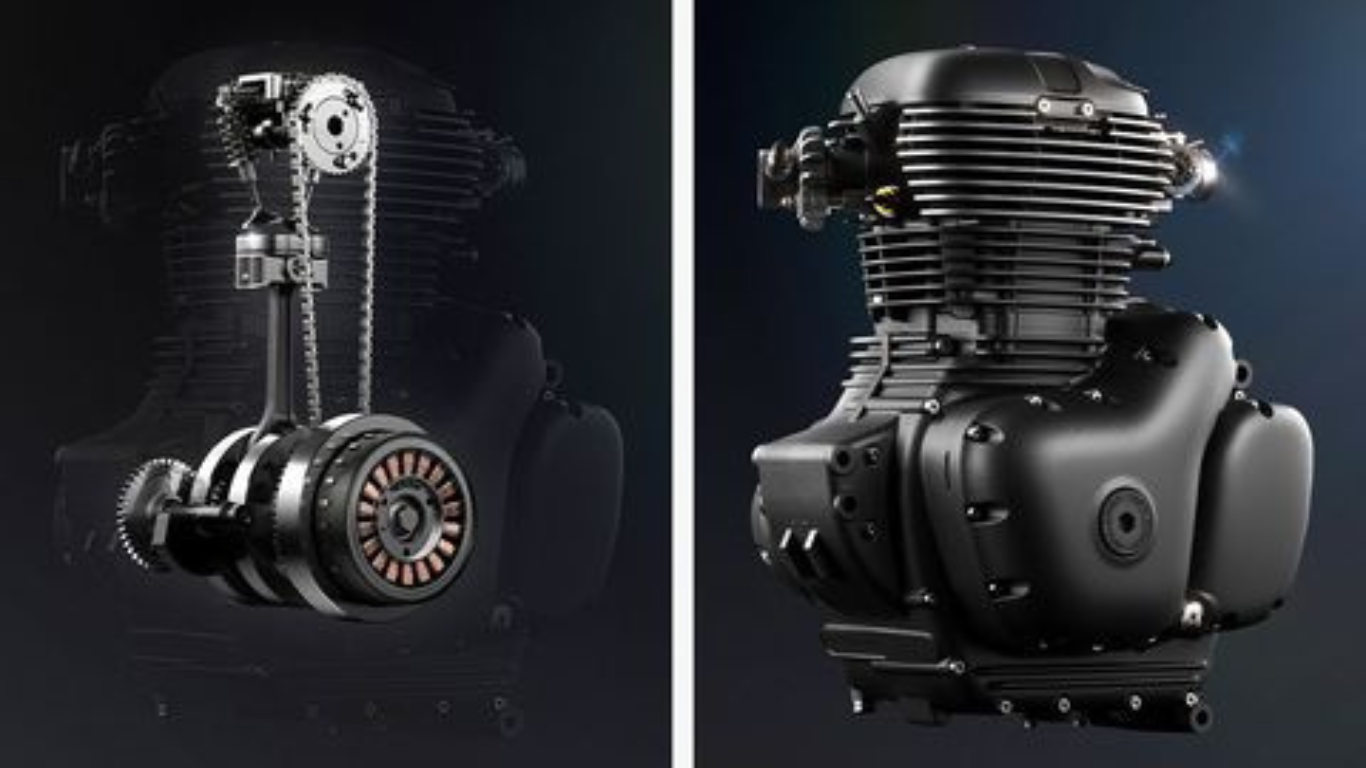The New & Bold: The Royal Enfield J-Series 350cc Engine Revealed!

10289 Views
Everything you need to know about the all new Royal Enfield J series 350 cc engine, including its performance, features, and technical specifications.

The numbers of Royal Enfield lovers have never gone down ever since it started manufacturing motorcycles in the 1950’s. However, things have not been all sunshine and flowers for the past couple of years. Quite a lot of people have started raising questions and doubting the capabilities of the legend.
Now, why would someone dislike such a lovely bike, you would ask.
Well, it’s because of the growing competition in the Indian motorcycle industry. Where the newer bikes came up with newer technologies and refined engines, resulting in better performance and overall riding experience.
Whereas, the RE was still using the same engine and tech that it had introduced in 2010, regardless of its infamous riding experience. But this automotive hulk had finally addressed the changing preferences of the motorbike enthusiasts, to smoother and efficient bike rides.
The Royal Enfield had introduced its newest engine in 2020, a decade later when it was previously upgraded in 2010, with the all new 350 cc single overhead cam (SOHC) engine, fitted in the new RE Meteor 350. This engine is the 4th generation engine since the birth of Royal Enfield. And Royal Enfield has bigggg plans to expand this newly loved engine, and has much bigger plans to widen its motorcycle horizon all together.
In this article, we will share all about this new 350 cc engine, which is based on the J series engine, what’s better and how it is different from the prior engine.
To begin with, let's zoom out and understand how RE’s 350 cc engines have evolved over the years.
History of the Royal Enfield 350 engines:

In the 1990s, the Royal Enfield Bullet 350 had a Cast Iron 350 cc engine and a separate four-speed gearbox. It featured a right-hand side gear shifter and a neutral finder lever. In 1999, Royal Enfield teamed up with AVL, an Austrian automotive consulting firm, to introduce a new 350 cc aluminium engine. The AVL engine offered slightly higher revs, better high-speed cruising, and longer oil change intervals (5,000 km) compared to the cast iron engine (3,000 km). It had a higher compression ratio and shorter stroke, requiring fewer tappet adjustments. However, it did have some issues like engine clatter and cam-gear backlash noise.
Meanwhile, the Cast Iron 350 cc engine continued with a five-speed gearbox in the newly launched Royal Enfield Electra 5S and the Standard Bullet 350. In the mid-2000s, Royal Enfield engineers addressed the cam gear backlash noise in the AVL engine by introducing adjustable cam spindles.
However, some clatter still remained in the aluminium engine. Eventually, in 2008, the AVL engine was replaced by the new unit construction engine (UCE), which had an integrated five-speed gearbox. The UCE engines featured hydraulic pushrods, eliminating the need for tappet adjustments found in the old cast iron and AVL engines.
The UCE engines gained a reputation for their high reliability and improved fuel efficiency compared to the AVL and Cast Iron engines. Equipped with a left-side gear shifter, the UCE 350, also known as the Twin Spark engine due to its twin spark plugs, became extremely popular. By the end of the decade, all Royal Enfield 350 cc motorcycles, including the Bullet 350, came with the new UCE 350 engine and a five-speed gearbox. The Royal Enfield Classic 350 emerged as the brand's best-selling model, contributing to over 80 percent of Royal Enfield's monthly sales.
The New 350 OHC Engine
Visually, the all new 350 cc (OHC) engine looks similar to the RE 650 cc parallel twin engine, but is nothing like it, mechanically. This new OHC engine is here to completely replace the old UCE 350 engine.
How is it any different though?
1. Displacement: The new engine volume has gone up from 346 cc to 349 cc, resulting in a little more room for the air and fuel flow. Thus, a little more power.
2. Bore & Stroke: The bore has increased from 70 mm to 72 mm, that means the diameter of the cylinder has increased by 2 mm. And, the stroke has been reduced from 90 mm to 85.8 mm, resulting in shorter distance travelled by the piston, within the cylinder.
3. Compression ratio: The compression ratio is the technical term for the ratio of volume of petrol in the cylinder when the piston is at the top of its stroke, then to the volume of petrol when the piston is at the bottom of its stroke. This ratio has now been reduced from 9.5:1 to 8.5:1.
4. Architecture: The new engine design features several notable changes for improved performance. Firstly, the cam gears have been replaced with a timing chain, coupled with a single overhead cam (SOHC) system. This upgrade results in reduced noise levels and more efficient valve timings. Secondly, the chain primary drive has been substituted with a gear primary drive, effectively minimizing transmission losses. Additionally, the introduction of a primary balancer shaft noticeably reduces engine vibrations, providing a smoother experience from the moment the engine is started.
5. Output: The latest engine generates 1 bhp more than its predecessor. However, the significant improvement lies in the maximum power output of 20.2 bhp achieved at 6,100 rpm, compared to the older UCE 350 that reached 19.1 bhp at 5,250 rpm. This effectively broadens the usable rev range, providing better flexibility. On the other hand, peak torque has slightly decreased from 28 Nm at 4,000 rpm to 27 Nm at the same rpm.
| | All-New 350 cc SOHC | RE UCE 350 cc ||:-----------------:|:------------------------------------:|:-----------------------------------:|| Type | Single-cylinder SOHC, air/oil cooled | Single-cylinder, pushrod air-cooled || Displacement | 349 cc | 346 cc || Bore x Stroke | 72 mm x 85.8 mm | 70 mm x 90 mm || Compression Ratio | 9.5:1 | 8.5:1 || Maximum Power | 20.2 bhp @ 6,100 rpm | 19.1 bhp @ 5,250 rpm || Peak Torque | 27 Nm @ 4,000 rpm | 28 Nm @ 4,000 rpm || Gearbox | 5-speed constant mesh | 5-speed constant mesh || Clutch | wet, multi-plate | wet, multi-plate (6 plates) || Lubrication | Wet sump, forced lubrication | Wet sump |
Conclusion:
These implemented changes have brought about a highly satisfying transformation in the engine's performance. The distinctive thump characteristic still remains, but now the engine exhibits a more liberated and elevated revving capability, accompanied by a refined demeanour that is instantly appealing. Moreover, the torque delivery has become broader, spanning the entire range of revolutions, providing substantial and muscular torque from as low as 2,400 RPM to well beyond 4,500 RPM.
The engine operates with enhanced smoothness and refined behaviour throughout the rev range, owing to the incorporation of a primary balancer shaft. Additionally, the adoption of a single overhead cam configuration contributes to a more unrestrained revving experience, with the redline elevated to a higher 6,100 RPM in comparison to the UCE 350 cc engine. In terms of maintenance, the new engine boasts extended oil change intervals of 10,000 km, making it more user-friendly in terms of upkeep, although service intervals are still set at 5,000 km.
We will also cover the upcoming LC series, the new twin engine series and a completely new engine type that will be introduced by RE later this year. So, stay tuned.